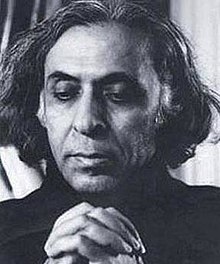I first met him in New York in March 1963. Earlier I had reviewed his ‘The Serpent and the Rope’ for All India Radio.
Raja Rao’s (1909-2006) first novel “Kanthapura” was published in London in 1938 by Allan and Unwin. They published all of Dr Radhakrishnan’s books. Mahatma Gandhi is the inspiration behind the “Kanthapura”. E.M Forster called it, “The finest novel to come out of India in recent years.” Raja Rao spent many years in France. He studied at Montpellier and Sorbonne, the most famous universities of France.
I first met him in New York in March 1963. Earlier I had reviewed his “The Serpent and the Rope” for All India Radio. Its range is cosmopolitan and combines fiction with philosophy.
Raja settled in Texas, US in the 1980s, taught at the university till he passed in 2006. I had something to do with his being awarded the Padma Bhushan in 1968. Jawaharlal Nehru and Indira Gandhi knew him well. In my book of tributes to Nehru, “The Legacy of Nehru” Raja Rao wrote a very long and complex essay on Nehru.
They met for the first time in Switzerland in 1936. Nehru’s wife Kamla was lying ill in a sanitorium in Lausanne. Nehru’s first words were, “Malraux spoke to me about you in Paris?” For ten years he was President de Gaulle’s minister for culture. His most famous and widely read novel is, “Man’s Fate”. At the age of 76 an ailing Malraux was keen to get to East Pakistan in 1971 to help the Awami League in its struggle against Pakistan. Indira Gandhi persuaded him to drop the idea. Raja Rao was his closest Indian friend besides Jawaharlal Nehru
***
The University of Texas at Austin
Austin, Texas, 78712
1808, Pearl Street,
Austin, Texas, 78701,
USA
Dear, dear Natwar,
You must wonder what is happening to me—no, nothing else than that I have been working very-very hard on a book, and (you will be happy to hear) it is a novel, the first novel after I wrote The Serpent and the Rope some twenty years ago. This time, however, the novel has become long, very long indeed—some sixteen hundred pages long, and it will be in three volumes (1) The Hunt In Himalayas; (2) In the Tiger’s Mouth; (3) The Myrabolan in the Palm of your hand. And there will be two appendices, as part of the novel. A letter to Andre Malraux, and a final letter from Michel (a character in the novel) on the presence of good and evil in the world etc. as you see, it is a most ambitious task, but it has been exciting to write. The main theme is, the ultimate dialogue is not between the East and West but between the Brahman and the rabbi, the Brahmin this time happens to be a mathematician and the rabbi is a Polish Jew, who is a specialist in computer linguistics and the story moves backwards and forwards between India and Europe (as in The Serpent and the Rope) but this time America too is in the picture, mainly Princeton. I have worked so hard on this book for three years that I am well-nigh exhausted, and I will therefore now take a holiday going to Europe and India, and Europe again. Tell me if you will be in London at the end of December or in February, for I would so much like to see you again and talk to you, of my book and of so many other things. I am going to India for the Commonwealth Literary Conference and will be there for about six weeks—my trip will be short because I am afraid of falling ill with asthma, and you remember how terrible it was some years ago.
Also, though the book is finished in its first version I have to verify many facts, and add a few more passages, philosophical or mathematical and again cut a few pages if I can. So the book will not be ready for publication till January 1978, at the earliest. It has been most exalting to write, and this time my work is sadder and my themes more difficult than ever before. However, we might be able to talk of all this when we meet—and I hope we can.
Yours Affably,
Raja

